

| Identifying Mottled and Willow Beauty |
| .............. |
| Flying during the Summer and months, Mottled Beauty and Willow Beauty are two moths which often present those new to moth trapping with identification difficulties. | ||
| .............. | ||
| Both moths are common across much
of Nottinghamshire, although (of the two) Willow Beauty
is perhaps the more likely to turn up in suburban MV
traps. These are both quite large moths and although there are several similar species, none of the real confusion species, are ever likely to be caught in suburban areas of Nottinghamshire. Confusion species Something to be aware of (but often easily neglected) when identifying moths, is size. In many instances of moths with very similar markings or resting postures, the wing-span or forewing length, can be the difference between one species and another. In terms of appearance, Great Oak Beauty, Pale Oak Beauty and Satin Beauty are all very similar. The first two species are considerably larger and Satin Beauty is rare in Nottinghamshire, currently known only from Clumber Park. |
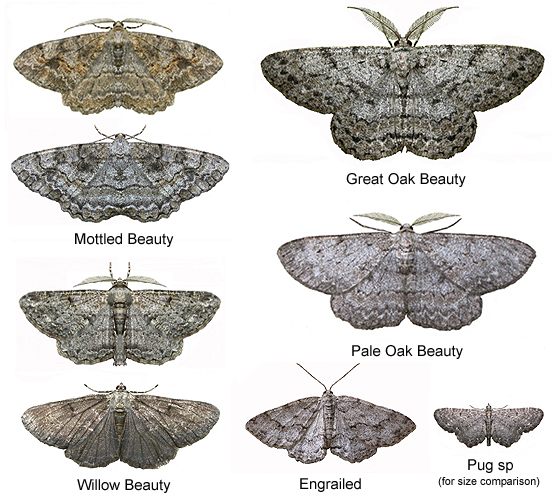 |
|
| .............. | ||
| It may seem
unlikely, but we have known Willow Beauty to be
incorrectly identified as a species of Pug. All Pugs are
considerably smaller, but do have resting positions
reminiscent of Mottled and Willow Beauty. A much more likely confusion species in our minds, would be Engrailed (Ectropis crepuscularia) but this moth will hopefully have been learned earlier in the Spring, long before Mottled or Willow Beauty even fly. Engrailed has two and sometimes three broods a year, so it will often occur at the same time as both Mottled and Willow Beauty. It also shows variability in markings, especially between individuals of first and second broods. |
||
| 70.258 .... B&F 1937 .... Willow Beauty Peribatodes rhomboidaria ([Denis
& Schiffermüller], 1775) |
Nottinghamshire status and distribution: Willow Beauty is a common, wide-ranging moth across the county. Although most common in woodland, the wide range of larval foodplants mean that it frequently occurs in urban gardens. Flight period: Flies from June to September, with occasional records in May and a peak in August. Identification features: The term beauty is rather misleading, as most individuals are a drab grey and often very poorly marked with few distinguishing features. The key identifying feature are the two merging cross-lines at the trailing edge of the forewing. Even on worn or faded moths, these are usually easy to discern. Willow Beauty is slightly smaller than Mottled Beauty and the antennae of the male are more feathered, although familiarity with Mottled Beauty helps in this. |
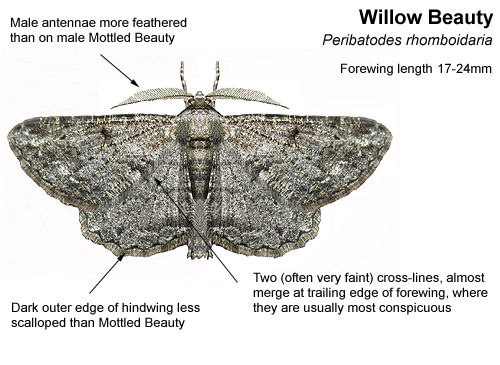 |
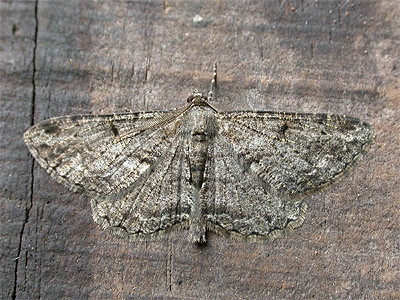 |
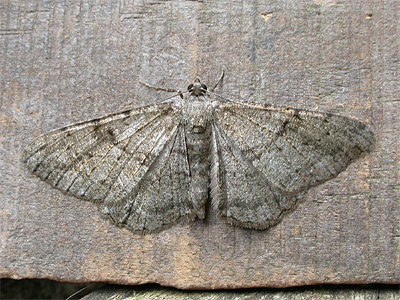 |
|
| 70.265 .... B&F 1941 .... Mottled Beauty Alcis repandata (Linnaeus,
1758) |
Nottinghamshire status and distribution: A common moth across Nottinghamshire, with virtually the same distribution as Willow Beauty, although there are fewer records from urban sites. Mottled Beauty is common in deciduous or mixed woodlands, along hedgerows and other rural sites. Flight period: Generally flies from early June through to August, often with a few late records in September and a pronounced peak occurring in July. Identification features: Mottled Beauty is a much more attractively marked moth than Willow Beauty, with most individuals being slightly larger. Ground-colour of both fore and hindwings can vary, being either light brown or grey, with various areas of darker/lighter shading. The continuous dark, wavy cross-line, running through the centre of all four wings is the most obvious feature. |
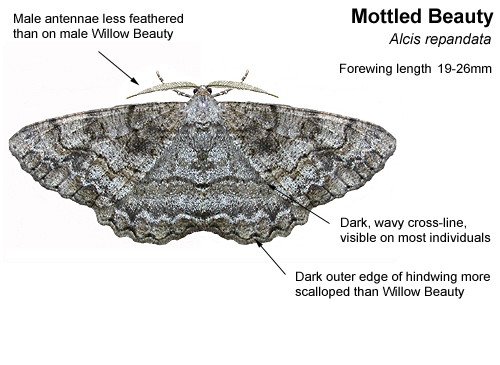 |
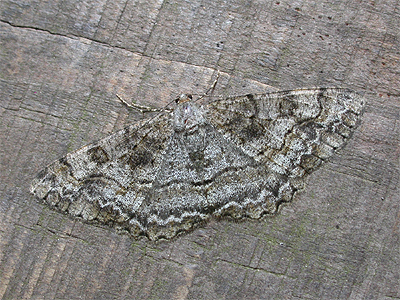 |
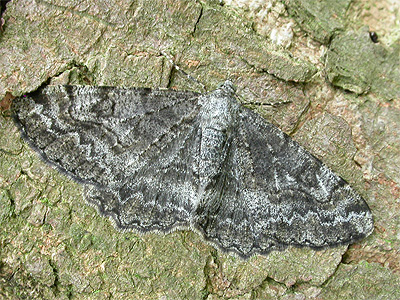 |